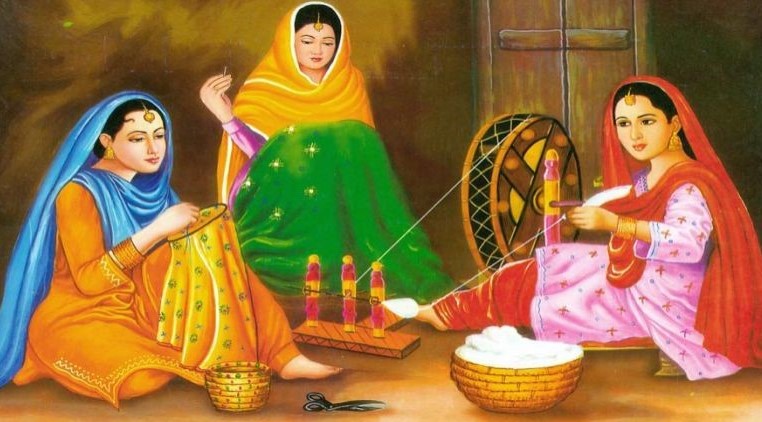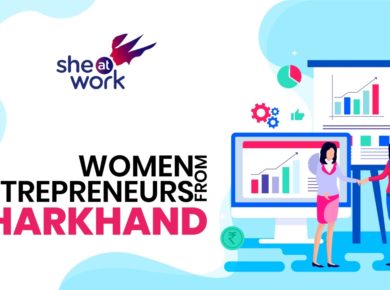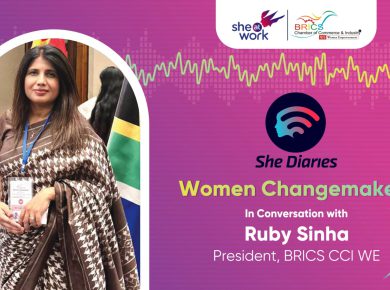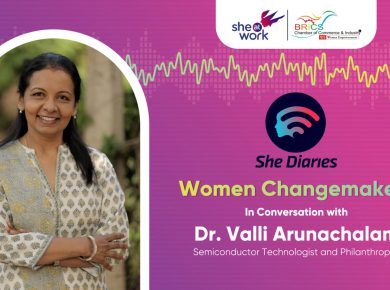Even after 70 years of independence you can literally count on fingers the number of successful women across sectors. Kiran Mazumdar Shaw in business, Zia Mody in legal practice, Shikha Sharma, Chanda Kocchar in banking, Vinitha Narayanan in technology, Kiran Bedi in services and maybe some more. Though across sectors there are more women going out to work, often performing better than their male counterparts in jobs across media, advertising, communications, medicine, human resource management, marketing functions and businesses and so on.
There has been a small change in urban India, or should we say metro cities, with more women going out to work. But across companies women constitute less than 30% of the work force and in male dominated industries like computer hardware or automobile manufacturing the number is even less. And often in roles that are seen as `women centric’, like public relations, HR, communications. 70 years on its time we break these stereotypes and don’t look at job roles as fitting a particular gender but look at best performing talent — be it men or women.
While in urban areas, there are at least some opportunities for women, in rural areas the situation is bad. Marriage is the top most option (at least that’s the predominant thinking among male members of the society) for women even if they want to migrate to big cities to work or do something other than just be farm hands in their villages. Today, there’s an even greater need to empower women, as technology enabled work breaks traditional barriers.
What women could not access and achieve earlier can be enabled now. Technology provides women with an opportunity to leapfrog. They can be Internet trained to do tasks like making websites, using Internet to impart knowledge, access bigger markets for their products and so on. In this regard initiatives like Internet Saathi are trying to empower women in rural areas.
A project by Ratan Tata, chairman emeritus of Tata Sons, Google and Intel, Internet Saathi aims to help women access Internet. The project plans to deploy more than 1,000 customised bicycles with connected devices to give villagers an experience of Internet. They don’t have to go anywhere like a cyber café (almost impossible to find in remote, rural areas). Internet will come to them on bicycles. The project, started in July 2015 in Rajasthan, has already touched 100,000 villages and about 10 million women have experienced Internet on smartphones and other devices that the bicycle has. With women trainers Internet Saathi bicycles are informing and teaching rural women about benefit of Internet.
In its bid to support and encourage entrepreneurship among women, the National Institute of Electronics and Information Technology (NIELIT), a body with the Ministry of Electronics and Information Technology (MeitY), Government of India has recently launched a unique initiative “????–??– Power of She” aimed at encouraging entrepreneurship among women under ‘Digital India’
Another project Wireless Women for Entrepreneurship and Empowerment (W2E2), is a data inclusion programme for women to help them understand benefits of ICT—Information, Communication and Technology. W2E2 is helping rural women with digital tools, e-learning methods and enhancing their traditional skills (like handicraft or jewellery making) by providing access to newer designs, technologies and markets. This was started in May 2015. After W2E2 training some women have been able to set up their own kiosks to provide online services in the local community.
Understanding use of Internet empowers them to do things which earlier seemed daunting. Like apply for a loan online, do online banking, money transfers, create better awareness about education and health via online resources and even getting daily news, making them more aware about daily life.
Another project, Helping Women Get Online (HWGO), gives basic Internet and computer training to women. This trains women in going online and explains what all they can do once they are online via their smartphones.
Such projects are doing multiple things: spread basic knowledge of Internet, computers and uses of technology. This is very essential in a country staved of women roles models and where less than 17% of the online population comprises women (that’s also largely in big cities, with access to good education and resources). The good part is that technology makes it easier to break barriers. At least getting to work can’t be an excuse. Jobs can be done anywhere, on smart devices, overcoming the challenges of going long distance to find work.
The need is to empower women — across cities, towns, villages. What could not be done in 70 years can now be done in less than 10 years. Check the dropout rates of girls in schools, empower women, don’t look at them as different from men when recruiting people.










